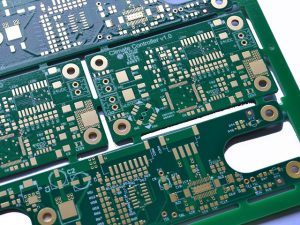
If you’ve ever needed to connect devices or transfer data, you’ve probably come across Ethernet RJ45 and RJ11 cables. While they may look similar, they have very different purposes and capabilities. In this blog post, we’ll explore the differences between Ethernet RJ45 and RJ11 cables, and how to choose the right one for your needs.
Ethernet RJ45
Ethernet RJ45 is the most common type of networking cable used to connect devices like computers, routers, switches, and modems. It’s an 8-pin connector with a rectangular shape, typically made of plastic, and connects to a socket on a device.
Definition and Function
The RJ in “RJ45” stands for Registered Jack, and the 45 refers to the number of the wiring scheme used in the cable. Ethernet RJ45 cables are used to transmit data between devices at high speeds, with the capacity for gigabit speeds and beyond.
Common Uses
Ethernet RJ45 cables are commonly used in home and office networks, where they connect devices to the internet or to each other. They’re also used in data centers and server rooms to connect servers and other networking equipment.
Advantages over RJ11
One of the biggest advantages of Ethernet RJ45 cables over RJ11 cables is the speed and capacity for data transmission. RJ45 cables can handle higher speeds and more data than RJ11 cables, making them more suitable for modern networks.
Ethernet RJ45 cables also offer better security and reliability than RJ11 cables, as they’re less prone to interference and signal loss.
Types of Ethernet Cables
There are several types of Ethernet RJ45 cables, including Cat5, Cat5e, Cat6, and Cat7. Each type has different capabilities and speeds, with Cat7 being the fastest and most reliable.
RJ11
RJ11 cables are typically used to connect telephones, fax machines, and other analog devices to a wall jack. They’re a 4-pin connector with a narrow rectangular shape, also made of plastic, and connect to a socket on a device.
Definition and Function
The RJ in “RJ11” also stands for Registered Jack, and the 11 refers to the number of the wiring scheme used in the cable. RJ11 cables are used to transmit analog signals, such as voice or fax, between devices.
Common Uses
RJ11 cables are commonly used in homes and offices to connect telephones to wall jacks, or to connect fax machines and modems to phone lines.
Limitations Compared to Ethernet RJ45
One of the biggest limitations of RJ11 cables compared to Ethernet RJ45 cables is their speed and capacity for data transmission. RJ11 cables are much slower and can only handle analog signals, making them less suitable for modern networks.
RJ11 cables are also less secure and reliable than Ethernet RJ45 cables, as they’re more prone to interference and signal loss.
Differences between Ethernet RJ45 and RJ11
There are several key differences between Ethernet RJ45 and RJ11 cables, including their physical characteristics, transmission capabilities, and compatibility with different devices.
Physical Characteristics
Ethernet RJ45 cables have 8 pins arranged in a rectangular shape, while RJ11 cables have 4 pins arranged in a narrow rectangle. RJ45 cables are also generally larger and more robust than RJ11 cables.
Transmission Capabilities
Ethernet RJ45 cables can transmit data at much higher speeds and over longer distances than RJ11 cables. RJ11 cables are limited to analog signals and lower speeds.
Compatibility with Different Devices
Ethernet RJ45 cables are compatible with a wide range of devices, including computers, routers, switches, and modems. RJ11 cables are typically only compatible with analog devices like telephones and fax machines.
Choosing the Right Cable
Choosing the right cable for your needs depends on several factors, including the devices you’re connecting, the distance between them, and the speed and reliability required for your network.
If you’re setting up a home or office network, Ethernet RJ45 cables are generally the best choice. They offer faster speeds and more reliable connections, and are compatible with a wide range of devices.
If you’re connecting analog devices like telephones or fax machines, RJ11 cables are the only option. However, if you’re connecting digital devices like modems or routers, Ethernet RJ45 cables may still be a better choice.
When choosing an Ethernet RJ45 cable, you’ll also need to consider the type of cable and the length you need. Cat5e is the most common type of Ethernet cable, offering speeds up to 1 Gbps over distances up to 100 meters. Cat6 and Cat7 offer faster speeds and better reliability, but may be more expensive.
Conclusion
Ethernet RJ45 and RJ11 cables may look similar, but they have very different purposes and capabilities. Ethernet RJ45 cables are used for high-speed data transmission in modern networks, while RJ11 cables are used for analog signals like voice or fax.
When choosing a cable, it’s important to consider the devices you’re connecting, the distance between them, and the speed and reliability required for your network. Ethernet RJ45 cables are generally the best choice for home and office networks, while RJ11 cables are the only option for analog devices.
By understanding the differences between Ethernet RJ45 and RJ11 cables, you can choose the right cable for your needs and ensure reliable, high-speed connectivity for your devices.




